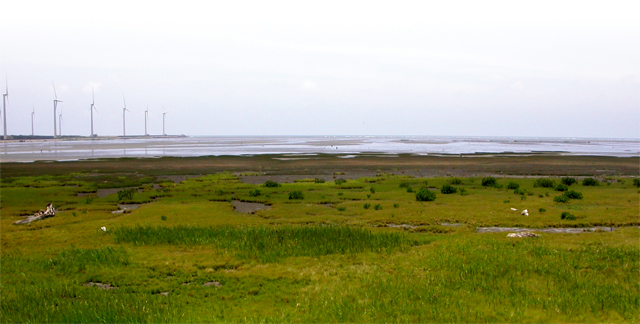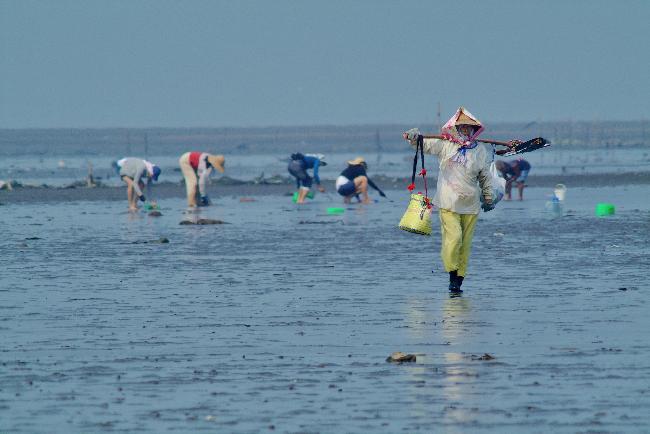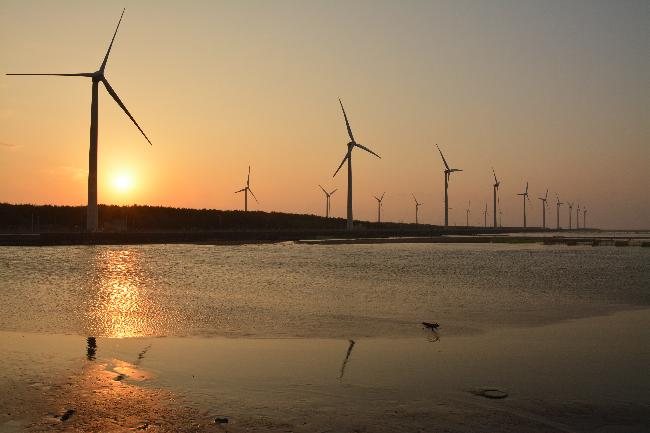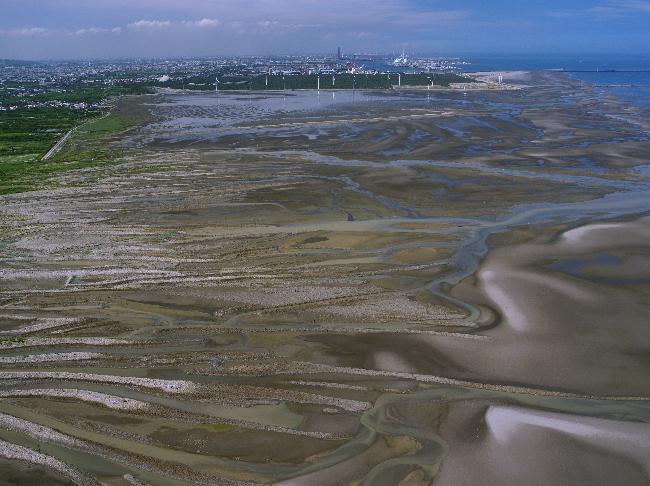Taiwan's Wetlands of Importance
Map of Taiwan's Wetlands

-
Number
TW012
-
Area
734 ha
-
Chinese Name
高美重要濕地
-
Category
Coastal natural wetlands
-
Name
Gaomei Important Wetland
-
Administrative area
Qingshui District and Dann District, Taichung City
-
Related plans
Wildlife Refuge, Major Wildlife Habitats
-
Related authorities or units
Taichung City Government
-
Boundaries
This wetland extends north to Dajia Estuary, east to the coastal embankments along the section of the West Coast Expressway in Qingshui District, through Fanzailiao Levee, Gaomei Levee No. 1 and No. 2, down to the north levee, and south to the average low tide line to the west, and the north levee of Taichung Harbor.
-
Introduction
Gaomei wetland has 3-km wide intertidal zone. The surrounding terrain is flat. The wetland stretches as far south as the north levee of Taichung Harbor. Nourished by Dajia River, it supplies ample nutrients and foods and is thus a habitat for an abundance of creatures.
-
Ecological resources of importance
This wetland has a diverse topography and a high concentration of nutrients, making it a fertile breeding ground for many benthic animals. In addition, the estuary provides a complete food chain. The wetland is therefore a major attraction for migratory shorebirds, where 127 species of birds from 45 families have been recorded. Among them are the black-faced spoonbill and Saunders’s gull, which have been rated “Endangered” and “Vulnerable, respectively.” Gaomei Wetland has also been identified by the Chinese Wild Bird Federation as an A1 habitat, a site with regular or potential presence of globally threatened or endangered species of birds.
-
Endangered species
Black-faced Spoonbills, Spotted Greenshank, Hygrophila pogonocalyx, Hayata, Bolboschoenus planiculmis
-
Rare and valuable species
Chinese Egret, Osprey, Eastern Marsh Harrier, Common Kestrel, Little Tern, Black-nape Tern, Saunders' Gull, Painted Snipe
-
Types to be conserved
Eastern Collared Pratincole, Brown Shrike
-
The current situation and potential threats of wetlands
In November 1996, the authority found that someone put dirt and stones in the wetland, burying a portion of the rare species Bolboschoenus planiculmis. Many visitors have entered the refuge directly, stepped on Bolboschoenus planiculmis, and destroyed its habitat. In addition, the establishment of wind mill machinery by Tai-power has made it difficult for migratory birds moving between habitats for foraging and resting.
-
Participating in recommended units
Forest Bureau, Council of Agriculture; Agriculture Department, Taichung City Government; ROC Wild Bird Association




